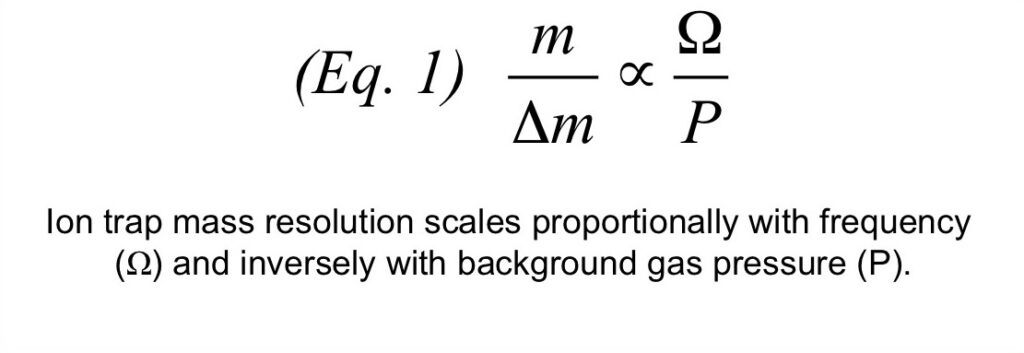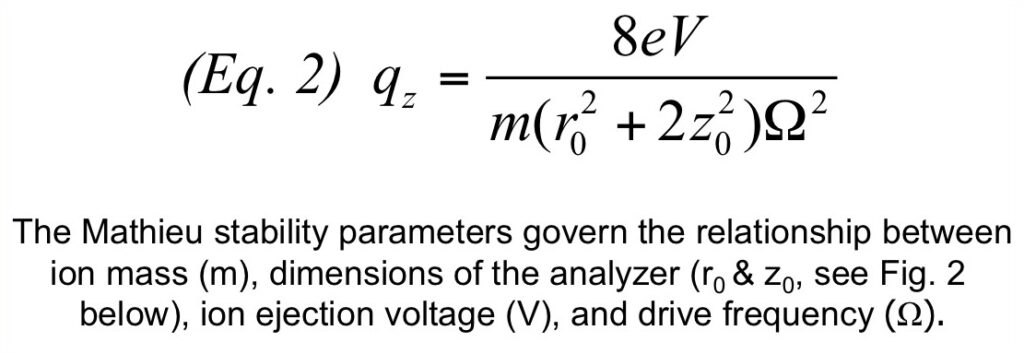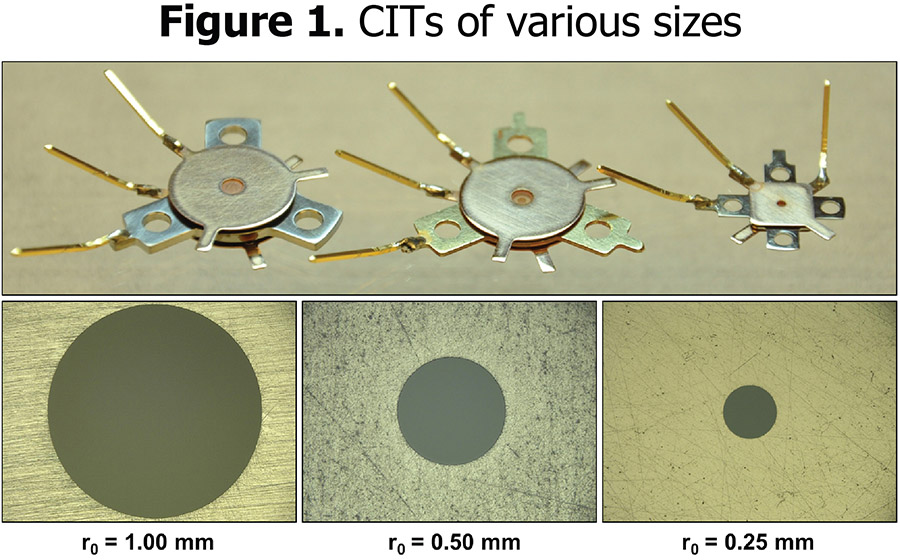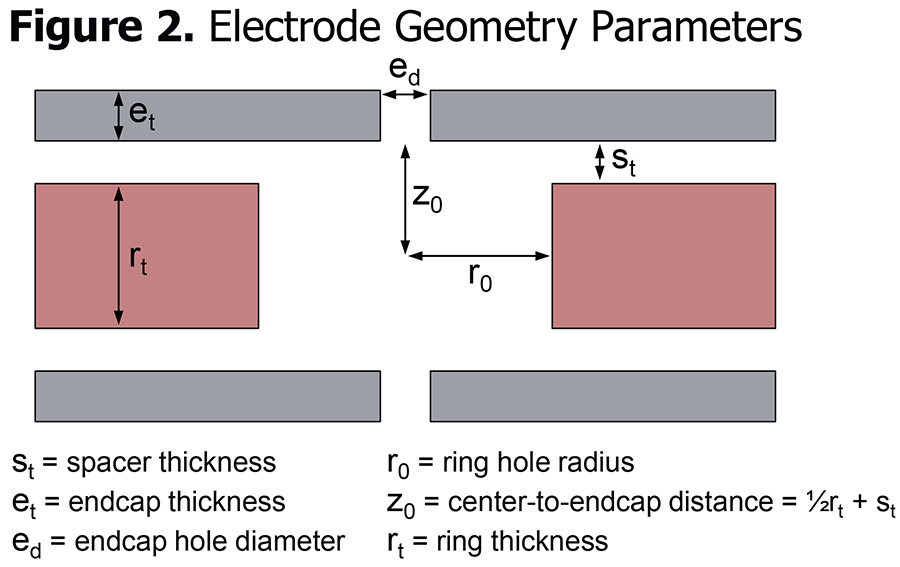Ion Trap Development


A key part of developing a portable mass spectrometer is minimizing the overall size, weight and power of the system. Typically, mass spectrometers have substantial vacuum pumping requirements that severely restrict their size limit. However, ion trap mass analyzers intrinsically operate with good performance in the presence of a background gas. Furthermore, they have unique scaling characteristics such that the mass resolution can be maintained at higher background pressures by increasing the drive frequency (Eq. 1). The analyzer can thus be supported by much smaller vacuum pumps, making it suitable for portability. In order to keep the drive voltage practical as the frequency is increased, the ion trap dimensions must be reduced (Eq. 2). A significant decrease in ion trap size makes it difficult to fabricate the trap electrodes with the ideal hyperbolic shape. Whereas benchtop instruments typically employ traps with radii of around 10 mm, our research deals with traps at 0.5 mm and below (Fig. 1). At these scales, therefore, the traps are simplified to a cylindrical geometry. Unlike traps with hyperbolic electrodes, which have almost pure quadrupolar trapping fields, the cylindrical ion trap (CIT) has large contributions from higher order fields. In order to achieve the best possible performance, the CIT geometry parameters needed to be optimized and under investigation in our lab are shown in Fig. 2. By computing the multipole distributions for various geometry parameter sets and evaluating them experimentally, the performance range can be mapped out to identify an achievable trapping field that will give sufficient resolution and sensitivity.


